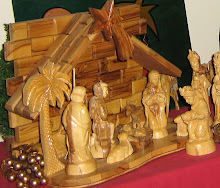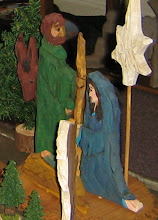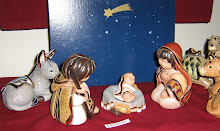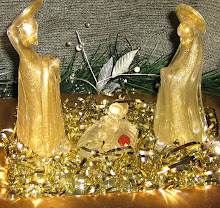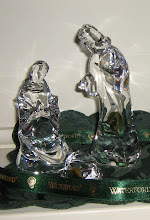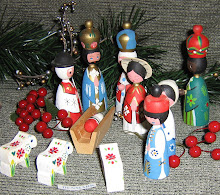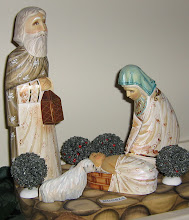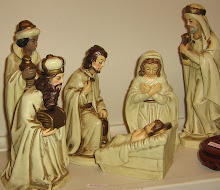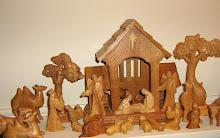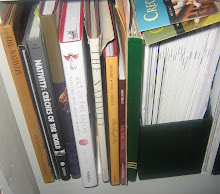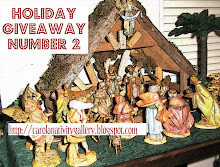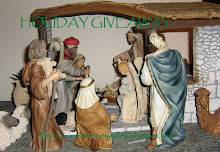This is the second in a series of posts about nativity scenes from different world areas. We turn now to Europe since that is where our western concepts of the nativity scene were developed. The display shows items from western Europe and ends with Italy. This post will focus on Italy because the tradition of the nativity was initiated there.
On Christmas Eve in 1223 St. Francis of Asissi provided a simple live nativity scene in a cave in Greccio, a village near Assisi, Italy. The scene consisted of a manger filled with straw an ox and a donkey and was set in a cave near the town. It took place as part of a Christmas Eve service at which Francis preached. In time this became a practice followed in other places across Italy.
Then, representations of the nativity of Jesus were made of ceramics, porcelain, wood and other materials. In homes of the wealthy these representations became quite elaborate, with dozens of characters in the scene. The custom spread across Europe and then to the new world.
Perhaps the most well-known nativity product in United States is the Fontanini line. Made in Italy, it is available in many sizes. The most popular size is the 5 inch size, for which many different stables and figures have been produced. In the U.S. Fontanini is distributed by Roman, Inc. Following are views of my Fontanini™ Heirloom Nativity.
I started out with 13-piece set of 12 figures and the stable.

Since then I have added other figures, accessories and structures to the scene.


I plan to enhance the setting with a multilevel unit and a more effective layout to depict the nativity story.
Here are the angels and the shepherds and their sheep:




The Roman soldiers near two Kings tents:

 The last grouping I have for this Fontanini set is an animal shelter with attendants:
The last grouping I have for this Fontanini set is an animal shelter with attendants:

The photo in the header of this blog pictures another Italian set, the Castagna nativity. It is made of alabaster and resin, referred to as "cold cast marble", "hand finished after removal from mold." The Castagna Collection was made in Bagni de Lucca, in the Tuscany hills of Italy in 1991.


"When Castagna was asked to make a Nativity Collection, she insisted that a few conditions be met. The setting would not be an Alpine manger or stable, but rather a stone structure as found in Bethlehem at that time. The figures would not be Italian or Spanish. They would have to be of Biblical origin. The figures would have to be animated and communicate the awe that Joseph and Mary must have felt when visitors from afar came to the humble stable to worship their child. The outcome of her efforts is yours to behold."



Next we have a grouping of three small nativities.

At the top is a vintage white plastic nativity scene. 6 pieces: 1.5, 2.5, and 3.5 inches.

On the left is a hand painted ceramic nativity by Nuova Capodimonte. 1-piece sculpture. 5" T x 4" W. inside a yellow grotto the colorfully dressed Family takes shelter.

On the right is a handpainted nativity family by Demetz Art Studio. 7" T. 6" W x 4 1/4"D wood base. "On bottom of base is an embedded gold color disc that identifies this as a Vincenzo Demetz Figlio piece."

Next is a three-piece set of art glass infused with gold, made in Murano, Italy.

Another small one-piece nativity is of pewter and stained glass with brass. 3 1/8" T. Brass base displays pewter figures of Joseph, Baby Jesus, and Mary in front of a round stained glass with a shooting Star.

This scene shows a cave-style stable, which was likely what the place for sheltering animals was like in long-ago Bethlehem.


The next post in this series, Nativity Scenes From – Europe, Part 2, will show creches from the British isles and continental Europe.










 I plan to enhance the setting with a multilevel unit and a more effective layout to depict the nativity story.
I plan to enhance the setting with a multilevel unit and a more effective layout to depict the nativity story. 










































